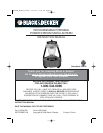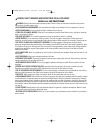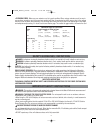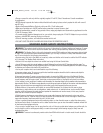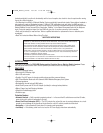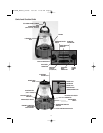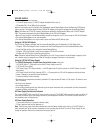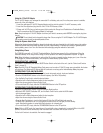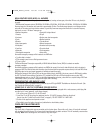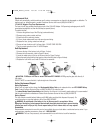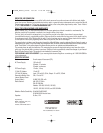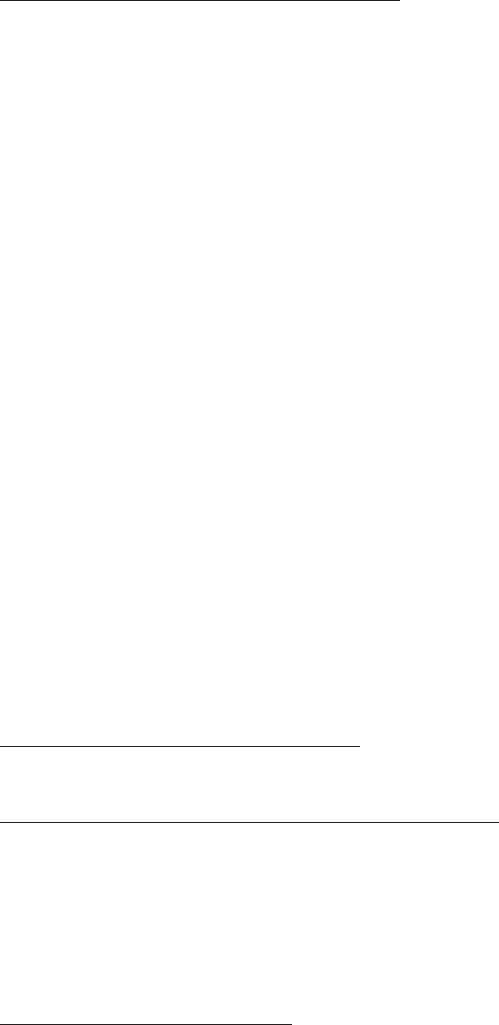
8
NOAA WEATHER RADIO (NWR) ALL HAZARDS
NWR is an all-hazards public warning system, broadcasting forecast, warning and emergency information 24 hours a day directly to
the public.
7 NWR Broadcast Frequencies include: 162.400MHz, 162.425 MHz, 162.450 MHz, 162.475 MHz, 162.500 MHz, 162.525 MHz, 162.550MHz
Broadcast range from the weather radio transmitter is approximately 40 miles. The effective range depends on such things as terrain
and quality of the receiver and indoor/outdoor antenna. Log onto http://www.nws.noaa.gov/nwr/nwrbro.htm to see which frequency
best serves your area. “All-Hazard” messages are:
• Weather emergencies • Chemical & biological hazard
• Tornados • Oil spill
• Hurricanes • Nuclear power plant emergencies
• Floods • Maritime accidents
• Blizzards • Train derailment
• Natural emergencies • National emergencies
• Earthquakes • Homeland security warnings
• Forest fires • Terrorists attacks
• Avalanches • Civil emergencies
• Technological emergencies • Amber alerts
Non-weather emergency messages will be broadcast over NWR when:
• (1) public safety is involved
• (2) the message comes from an official government source
• (3) time is critical
The National Response Plan assigns responsibility to NOAA’s National Weather Service (NWS) to broadcast non-weather
emergency messages.
Non-weather emergency messages will be broadcast over NWR at the request of local and/or state officials who wish to broadcast a
message on NWR, the official provides text information about the hazard and the appropriate response directly to the local NWS offices.
NWS offices have set up pre-arranged agreements to facilitate and speed the process.
NWR and the Emergency Alert System (EAS) use the same digital protocols, and NWR is the primary means for NWS alerts to activate
the EAS. The Federal Communications Commission (FCC) amended the EAS rules in 2002 and adopted numerous codes. NWS
introduced the new codes on June 30, 2004. Log onto https://www.weather.gov/os/eas_codes.shtml for a complete listing of EAS Event
(NWR-SAME) Codes if your receiver is equipped with Digital SAME Technology.
OPERATING THE LED BACKUP LIGHT
The LED Backup Light in the lantern base is controlled by the LED Light ON/OFF Pushbutton on the back of the unit. (See
the “Control and Function Guide” on page 5.)
USING
THE 12 VOLT DC PORTABLE POWER SUPPLY
This portable power source is also for use with 12 volt DC accessories equipped with a male accessory outlet plug that
are rated up to 1 amp (generally, a cell phone charger).
1. Lift up the cover of the unit ‘s 12 volt DC outlet.
2. Insert the 12 volt DC plug from the appliance into the 12 Volt DC Accessory Outlet on the side of
the unit (see the “Control and Function Guide” on page 5). DO NOT EXCEED A 1 AMP LOAD.
3. Switch on the appliance and operate as usual.
4. Periodically press the battery charge level pushbutton to check battery status.
CARE AND MAINTENANCE
Cleaning
Over time, dust or fingerprints may accummulate on the Lantern glass. Clean with a soft, clean, oil-free cloth moistened
with household window cleaner. Do not use alcohol based cleaners on plastic surfaces. This will eventually cause surface
clouding. Note: Never submerge this unit in water or any other liquid.
PS50LRB_Manual_120106 12/1/06 11:25 AM Page 8



